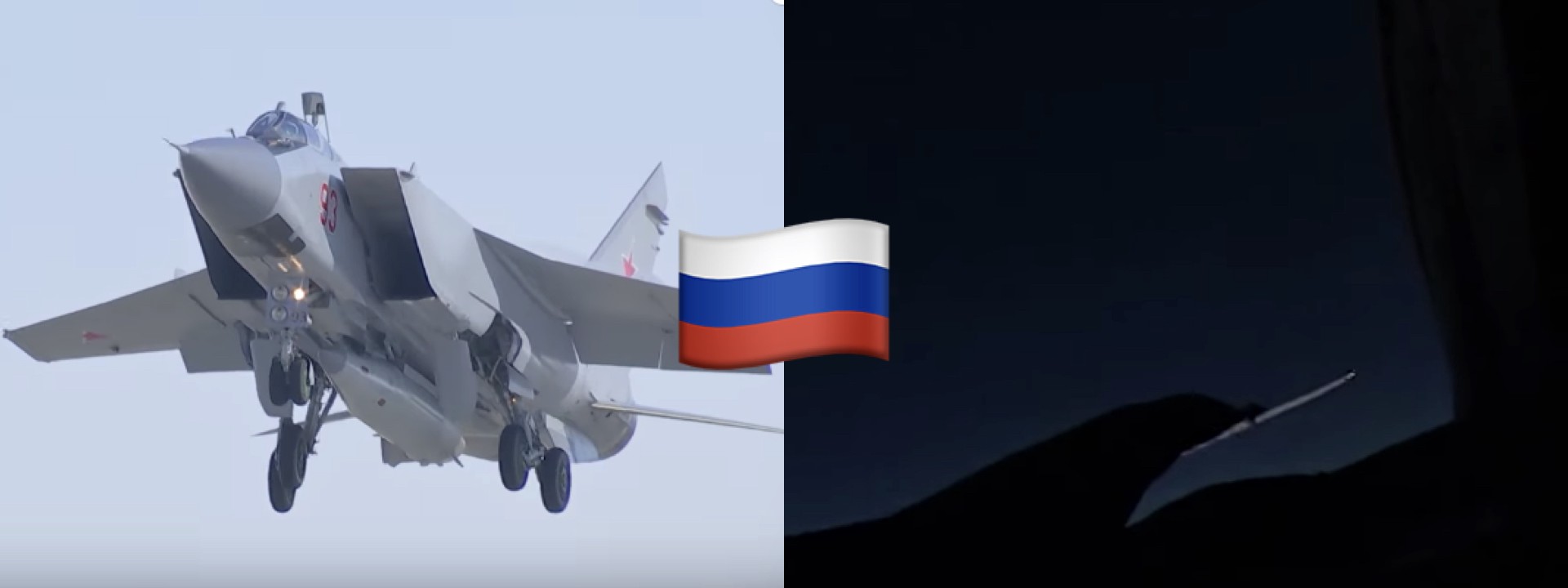#PutinAtWar: Putin’s Ideal Weapon
A brief look into Russia’s new hypersonic Kinzhal missiles
#PutinAtWar: Putin’s Ideal Weapon

A brief look into Russia’s new hypersonic Kinzhal missiles

During his annual presidential address to the Federal Assembly on March 2, Russian President Vladimir Putin introduced five new, cutting edge weapons. From all the newly introduced weapons, the strategic RS-28 “Sarmat” missile received the most attention after it was shown aimed at Florida in the promotional video.
Along with the other four strategic weapons systems, Putin introduced the new nuclear capable, air-launched missile “Kinzhal.” Putin’s previous claims of developing an “ideal weapon” were supported by a recent successful missile test.
@DFRLab took a closer look at the new system.
The Test
During Putin’s speech at the Russian Federal Assembly earlier this month, Putin announced the new nuclear capable air-launched missile, supposedly named Kh-47M2 “Kinzhal” (Dagger). During his speech, a visualization of the new weapon was shown to support his statement. A new hypersonic missile was launched from a modified MiG-31BM (NATO reporting name “Foxhound”) fighter and hit various targets.

Putin went so far as to describe the new missile as “an ideal weapon,” capable of flying at ten times the speed of the sound and capable of overcoming air-defense systems.
To further support the announcement, Russia declared a successful test of the missiles on March 10. According to the Russian Ministry of Defense (MoD), the launch went according to plan and the hypersonic missile hit the test target. A video was posted as proof of the successful launch.
A short portion of a flying missile in a dark background in the posted video, allegedly showing the new Kindzhal missile.

The limited video frames and Putin’s speech comprised the only publicly released evidence of the missile.
Location
The official statements and media articles describing the location of the test referred to an airfield in the Russia’s Southern Military District. Although no clear location was provided, geolocation data in the video suggests that the test took place in Akhtubinsk (Ахтубинск), Astrakhan Oblast.

Akhtubinsk has one of the biggest military bases in Southern Military District. Satellite imagery revealed an array of different aircraft, including the MiG-31BM (NATO reporting name Foxhound).

The possible barracks building is very close to the airbase tarmac, where the aircraft are parked. Satellite imagery revealed that there were at least three MiG-31BM aircraft stationed in close proximity to the building.

Other buildings in the background also verified the location. The vast size of this airbase and the variety of aircraft deployed suggested that the base serves the purpose of testing facility as well.

Here is the location of the Akhtubinsk airbase on the map:
Characteristics
Kinzhal is allegedly a strategic air-to-surface strike missile. Reportedly, the missile has maneuverable flight characteristics that can get past American defense systems. These characteristics are atypical of hypersonic, solid fuel missile designs. Putin called the Kinzhal missile the “ideal weapon,” with a range of 2000 km and speed of 10 times that of sound. This air-to-ground missile is initially carried by a MiG-31BM interceptor under its belly hard point. This distance added to the reported 3000 km unrefuelled range of the MiG-31BM interceptor, gives the Kinzhal a potential intercontinental strike capability.

Apparently, the new air-launched Kinzhal hypersonic missile, is a modified version of the 9M723 missile equipping the mobile Iskander-M surface-to-surface short range tactical ballistic missile system. Visual comparison suggests that these claims were true.

On March 11, after Russia’s latest test launch, U.S. Defense Secretary James Mattis commented that nothing Russia demonstrated changed the Pentagon’s perspective. The official Pentagon’s position remains that the newly announced systems are still years away from initial operational capability. The Pentagon’s similar technology, the Intermediate Range Conventional Prompt Strike Flight Experiment-1 (CPS FE-1), is still under development. These missiles are similar in speed (Mach 10) to Kindzal but are still in the prototype stage.
Conclusion
The initial impression of the newly introduced Russian strategic weapons may be awe-inspiring. Russia is well known for boasting military might and sabre rattling, but claims should always be taken with a grain of salt, especially related to development and production. The visual evidence from the test of the Kinzhal missile was very limited. The Pentagon’s skeptical position should be taken into account as well; the Pentagon argued that this technology is still years away from functional use. The announcement should be met with skepticism.
@DFRLab will continue to monitor Russian military and nuclear developments.
Follow along for more in-depth analysis from our #DigitalSherlocks.

